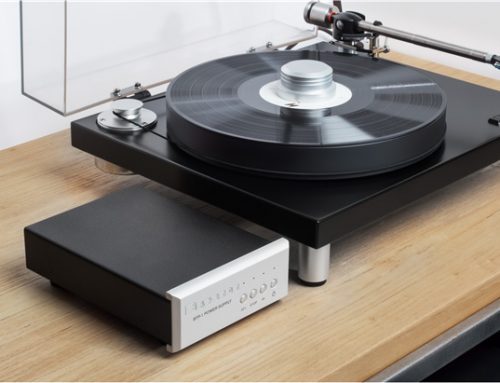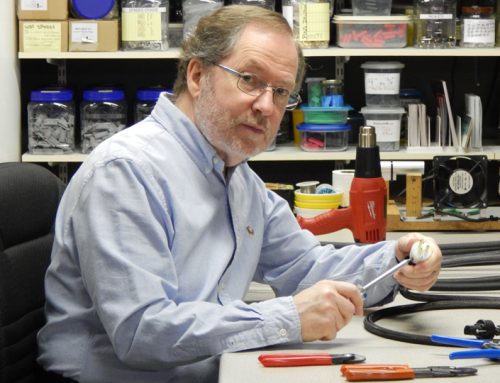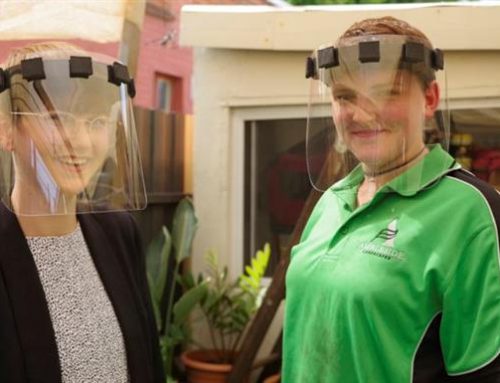
When I was younger, my father always stressed to me the importance of plugging our electronics into power bars with surge protection instead of directly into the wall outlet. He said it would protect the electronics from voltage surges – anything from smaller spikes to lightning storms. I thought it was a little ridiculous. After all, how many precious pieces of electronics have you lost to a lightning storm? Then one day the unthinkable (to me) happened. One of my family’s television sets not plugged into a surge protector blew up during a lightning storm in my neighborhood. Well it didn’t actually blow up, it simply stopped working.
While this scenario is not common at all, electrical surges and spikes occur in our power lines regularly. These surges and spikes can be severe enough to damage home theater equipment (as well as other sensitive electronics) gradually or immediately. Modern power protection equipment ranges from the simple power bar with surge protection to a power center that combines surge protection, line conditioning, voltage regulation and even power backup.
As it turns out, power bars with surge protectors (also called surge suppressors) are actually a little more complicated than first meets the eye. Depending on what level of protection and features a power bar has it can cost anywhere from five dollars to several hundred dollars.
First let’s take a look at how your home theater can be affected by unclean power and what to look for when choosing power bars and power centers to protect your investment.
In a normal household and office wiring in North America, the standard voltage is 120 volts AC (Alternating Current). Power lines are inherently noisy and voltage surges and spikes are common. This increase in the electrical potential energy can be caused by lightning storms, power company load switching, short circuits, improper home wiring, blackouts as well as power-hungry household electrical devices such as refrigerators, air-conditioners and microwaves. These high-powered devices require a lot of energy to switch on and turn off components like compressors and motors. An increase of voltage which lasts for one or two nanoseconds is called a spike and one that lasts three nanoseconds or longer is called a surge. Both spikes and surges (also called transient voltages) can compromise the performance of a home theater and over time can lead to premature demise of equipment. In the worst case, these transient voltages can reach as high as 6000 volts and fry electronics instantly. Today’s electronics are much smaller and more delicate than components in older equipment and are therefore more sensitive to current increases. Modern electronic devices can literally fry from overheating if they receive more power than they are designed for. For this reason it is becoming increasingly important to protect your electronics. No power bar with surge protection can actually save the connected components from a direct lightning strike, but the chances of a direct strike are very rare. In a lightning storm you should never rely on a surge protector to save your equipment. The best protection is to unplug or turn off your power bar. A good quality power bar will not send any electricity to the devices connected to it when it’s turned off.
A standard power bar with surge protection passes the electrical current from the wall outlet to the devices plugged into the power strip. If the voltage from the outlet rises above 120 volts, the surge protector diverts the extra electricity into the outlet’s grounding wire. One critical characteristic of transient voltages is that they are very quick. A device that serves to filter out the voltage spike has to detect the spike in nanoseconds in order to be effective. Look for surge protectors with a response time of 1 nanosecond or less. In most surge protectors the component that actually diverts this extra electricity is called a metal oxide varistor (or MOV). A good power bar will usually have several MOVs. Each MOV forms a direct connection between the hot power line and the grounding line. Generally, an MOV consists of a piece of metal oxide material in the middle that is joined to the power and grounding lines by two semiconductors. These semiconductors have a variable resistance that depends on voltage. If the voltage is below a certain level, the electrons in the semiconductors flow in a way that creates a high resistance, not allowing electricity to pass from the power to the grounding line. When the voltage exceeds that level, the electrons behave differently creating a much lower resistance. This low resistance allows the MOV to conduct a lot of current to the grounding line. Unfortunately all MOVs eventually burn out. In fact, one good surge can burn out all the MOVs in your power bar. When the MOVs cease to function, the power bar simply becomes a power strip and you may not even know it. Inexpensive power bars don’t have any visible signs that the MOVs are not working. Good quality power bars have an indicator light that tells you whether the surge protection is working properly.
Power surges can also reach your home theater through the coaxial cable carrying cable television or satellite signals. A power bar in your home theater should guard your equipment against both surges in the power lines and surges in the coaxial cable. Most modern power bars offer both types of protection plus a protection for telephones lines that are also susceptible to power surges.
Power bars come in varying ranges of prices, performance and shapes. There are many different products out there from the simplest $5 power bar (or power strip more appropriately) to a several hundred dollar rack-mountable power center that looks like a home theater component. When choosing the right device to protect your home theater you’ll have to consider several specifications and features shared among protection devices.
Let’s take a look at the ratings you should look for when buying a power bar (or center) with surge protection that might also offer power line conditioning.
To make sure you’re buying a quality product, first check out its Underwriters Laboratories (UL) ratings. UL is an independent company that tests electric and electronic products for safety. Many surge protectors made prior to 1998 are potential fire hazards. The MOVs inside them can get very hot to the point of starting a fire during a large power surge. Look for a label on the product that reads “UL Listed”, not just “UL Approved” or “UL Tested”. Also make sure the product is labeled as a “transient voltage surge suppressor”. This means that it meets the criteria for UL 1449 and minimum performance standards for surge suppressors. Not all “UL Listed” power bars have surge protection.
Every surge suppressor has a clamping voltage. This is the peak voltage the suppressor will pass to the devices plugged into it, if a spike or surge occurs. Look for a suppressor with a clamping voltage of 330 volts. Also, make sure the device is equipped to absorb surges between any pair of the three wires (positive, negative and ground) in an electrical circuit. These are indicated by the symbols L-N, L-G, and N-G.
Surge protectors are marked with a Joule rating. A Joule measures how much energy the suppressor can absorb and dissipate before it fails. The higher this number – the better. Look for surge protectors with at least 600 joules or more. Many of today’s power protection devices designed for the home theater offer ratings between 1300 and 2000 joules.
Another rating to look for is the response time. This indicates the amount of time it takes for the MOVs inside the power protection device to absorb the transient voltage. As mentioned above, look for response times of 1 nanosecond or less.
Lower quality power bars with surge protection may cause as much as 20 to 30 dB of signal loss between their coaxial input and output. This can have a tremendous impact on the quality of your cable/satellite television signals. Look for power protection devices the have virtually no signal loss through their coaxial surge protection.
Intermediate power products offer power line conditioning in addition to surge protection. AC power line noise and noise generated by other electrical and electronic devices compromise the performance of home theater equipment. These disturbances can cause inferior picture quality flawed with video streaking, lower resolution and video bandwidth. From the audio perspective, power line pollution can cause dynamic distortion and loss of peak power. Power line conditioning removes this noise from the power line and maximizes the audio and video performance in the home theater.
More advanced power products also feature filters which deliver maximum current to high power components (such as amplifiers) and isolate audio equipment from video equipment. Each home theater component can add noise to the power line that can travel through your power bar or power protection device to other components plugged into it. Isolating audio and video equipment ensures that noise is not transferred between the components. Some devices even isolate analogue sources from digital sources plugged into them.
High-end power protection and conditioning products come equipped with voltage regulators or voltage stabilizers. Power coming from the wall outlet does not always measure exactly 120 volts. At peak power consumption times during the day, it probably measures closer to 115 volts whereas at night it might be closer to 125 volts. Devices with voltage regulators constantly measure the voltage on the power line. If the voltage dips below or goes over a specified range (for example between 88 volts and 130 volts) a voltage regulator will adjust the voltage to 120 volts.
Some power protection products (like APC’s S10 and S15) even have battery backup power included for times when the power goes out completely. This will allow your home theater system to run for an additional few minutes after the power outage and will shut down your entire system properly and automatically. Of course a battery backup can be purchased separately as an addition to any power protection product of your choice.
Finally, when looking for protection for your home theater, take a look at the manufacturer’s warranty as it may be a good indication of product’s quality. Usually the more the manufacturer is willing to cover the more confident they are in their product. Of course, you should never rely on getting the money for your damaged equipment – the warranty lists all kinds of conditions under which you may not qualify to get this money.
Looking at the price of a device will give you an insight into what level of protection you can get from it. As a general rule, don’t expect much protection, if any, from a power bar that costs less than $10 – most of these are simply power strips. In the $10 to $30 range you will find basic surge protection and few features. Power bars above $40 will offer better protection ratings and carry additional features. Devices that cost a few hundred dollars and more will offer line conditioning, voltage regulation and even power backup in addition to surge protection. Consider how much your home theater gear cost you and how little that $100 or $200 power protection device may be compared to the rest of the equipment. You might look at power protection equipment as in insurance policy that doesn’t carry monthly payments. If only there was something like this for cars.
16 Comments
Leave A Comment
You must be logged in to post a comment.






… [Trackback]
[…] Find More to that Topic: novo.press/power-protection-for-your-home-theater-audio-video-gear/ […]
… [Trackback]
[…] Read More Info here to that Topic: novo.press/power-protection-for-your-home-theater-audio-video-gear/ […]
… [Trackback]
[…] Read More here to that Topic: novo.press/power-protection-for-your-home-theater-audio-video-gear/ […]
… [Trackback]
[…] Read More here to that Topic: novo.press/power-protection-for-your-home-theater-audio-video-gear/ […]
… [Trackback]
[…] Here you can find 12497 more Information to that Topic: novo.press/power-protection-for-your-home-theater-audio-video-gear/ […]
… [Trackback]
[…] Information to that Topic: novo.press/power-protection-for-your-home-theater-audio-video-gear/ […]
… [Trackback]
[…] Find More on on that Topic: novo.press/power-protection-for-your-home-theater-audio-video-gear/ […]
… [Trackback]
[…] Find More Info here to that Topic: novo.press/power-protection-for-your-home-theater-audio-video-gear/ […]
… [Trackback]
[…] Find More on on that Topic: novo.press/power-protection-for-your-home-theater-audio-video-gear/ […]
… [Trackback]
[…] Read More on that Topic: novo.press/power-protection-for-your-home-theater-audio-video-gear/ […]
… [Trackback]
[…] Information on that Topic: novo.press/power-protection-for-your-home-theater-audio-video-gear/ […]
… [Trackback]
[…] Info to that Topic: novo.press/power-protection-for-your-home-theater-audio-video-gear/ […]
… [Trackback]
[…] Read More on that Topic: novo.press/power-protection-for-your-home-theater-audio-video-gear/ […]
… [Trackback]
[…] There you can find 32107 additional Info on that Topic: novo.press/power-protection-for-your-home-theater-audio-video-gear/ […]
… [Trackback]
[…] Read More Info here to that Topic: novo.press/power-protection-for-your-home-theater-audio-video-gear/ […]
… [Trackback]
[…] Read More Info here on that Topic: novo.press/power-protection-for-your-home-theater-audio-video-gear/ […]